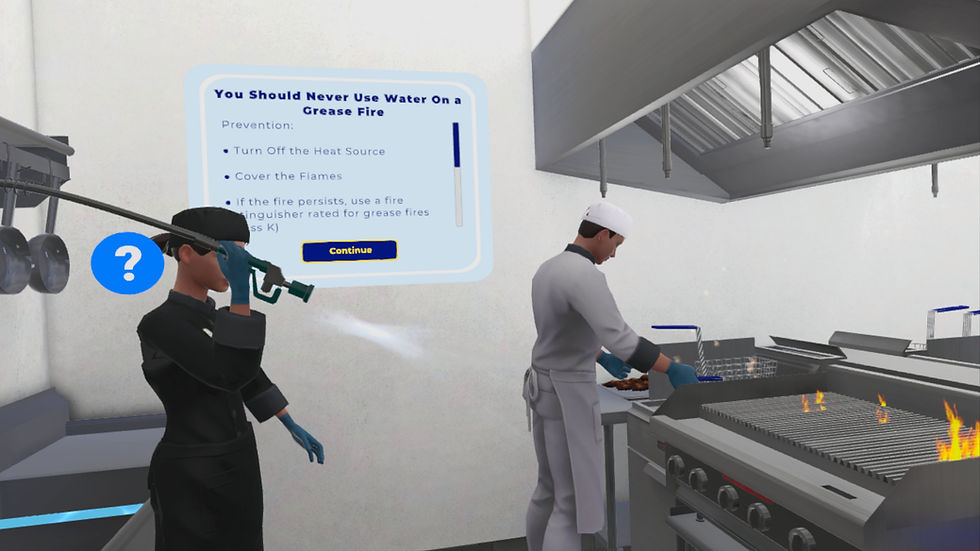Why VR Training is the Missing Ingredient in Foodservice Onboarding
- Brenden Wright

- Aug 29
- 2 min read
Introduction
Employee turnover has long been one of the biggest challenges in the foodservice industry. Traditional onboarding, i.e. using manuals, shadowing, and rushed in-kitchen training often leaves new hires overwhelmed, unprepared, and more likely to quit within the first 90 days. But what if onboarding could be safer, faster, and more engaging?
Virtual Reality (VR) training is emerging as the missing ingredient that foodservice operators need to successfully onboard and retain today’s workforce.

The Foodservice Onboarding Problem
High turnover costs: Each new hire can cost thousands in recruiting, training, and lost productivity.
Safety risks: New employees often step directly into busy kitchens without fully understanding safety protocols.
Inconsistent training: Shadowing relies heavily on who is available that day and their teaching style.
Short attention spans: Younger generations prefer interactive, hands-on learning over long manuals or lectures.
Why VR Training Works
Immersive, Hands-On Learning
Instead of just reading about how to clean a fryer or handle raw chicken, employees experience it firsthand in VR—without the risk of burns or cross-contamination.
Safe Mistakes, Real Feedback
VR allows trainees to make mistakes in a risk-free environment and receive instant feedback, building confidence before stepping into the real kitchen.
Consistent Training Across Locations
Every employee gets the same standard training, ensuring compliance and brand consistency across all units.
Engagement That Sticks
Studies show people retain up to 75% more information through experiential learning compared to lectures or videos.
Benefits for Operators
Reduce turnover: Employees feel more prepared and confident on day one.
Cut training time: VR accelerates learning curves, freeing up trainers and managers.
Improve safety & compliance: Reinforce critical food safety practices through repetition in VR.
Future-proof the workforce: Appeal to younger employees who expect digital, interactive tools.
Real-World Scenarios in VR Training
Menu Knowledge: Learn recipes, portion sizes, allergens, and plating standards in VR, ensuring consistency across locations and preparing employees for peak service.
Customer Service & Soft Skills: Simulate guest interactions, upselling, and problem-solving, giving front-of-house staff confidence before handling real customers.
Allergen Awareness: Train employees to identify common allergens, prevent cross-contact, and respond correctly to guest allergy disclosures—critical for safety and compliance.
Fire Safety & Safety Recognition: Learn to correctly use extinguishers and follow evacuation procedures.
Equipment Training: Step-by-step guidance on uses, cleaning, maintenance, and safe operation.
Operational Knowledge: Train on opening/closing procedures, food rotation (FIFO), sanitation schedules, and shift handoffs—core tasks that often get overlooked in rushed onboarding.

The Bigger Picture
For operators, VR is more than just a training tool—it’s an investment in retention, safety, and operational efficiency. By giving employees the confidence to succeed from day one, VR transforms onboarding from a weak spot into a competitive advantage.
Foodservice operators that embrace VR training aren’t just keeping up with technology—they’re solving one of the industry’s toughest challenges.
At Visual Conquest, we design custom VR training tools tailored to your operation. Whether it’s custom safety modules, equipment training, or full kitchen simulations, we help your team succeed faster. www.visualconquest.com

Comments